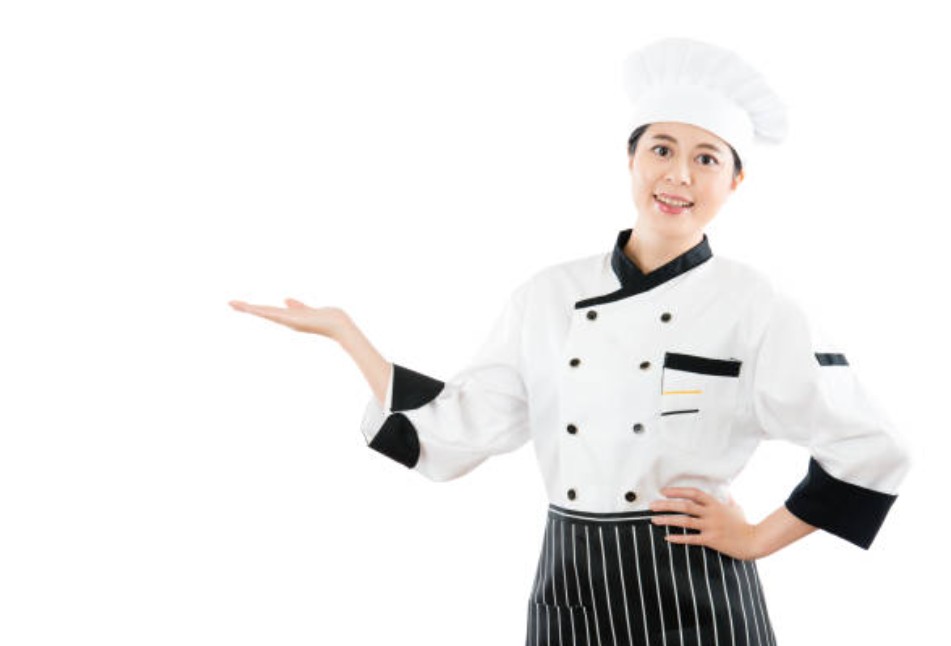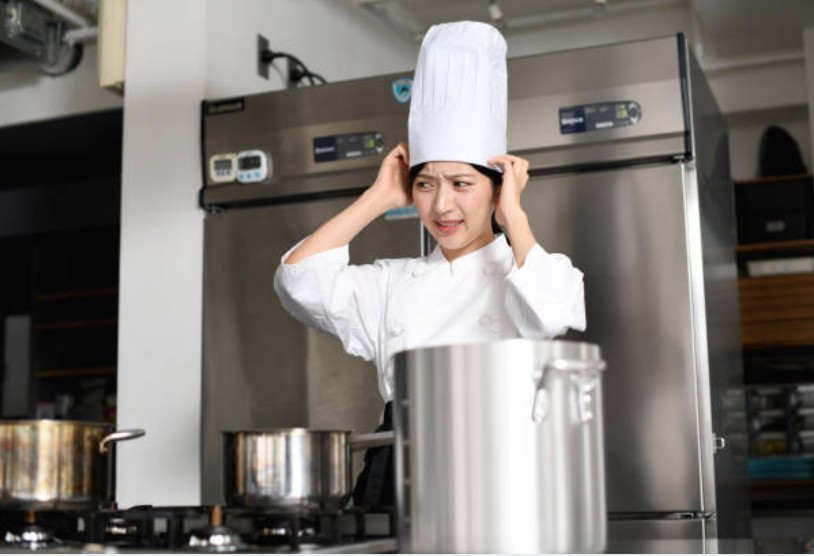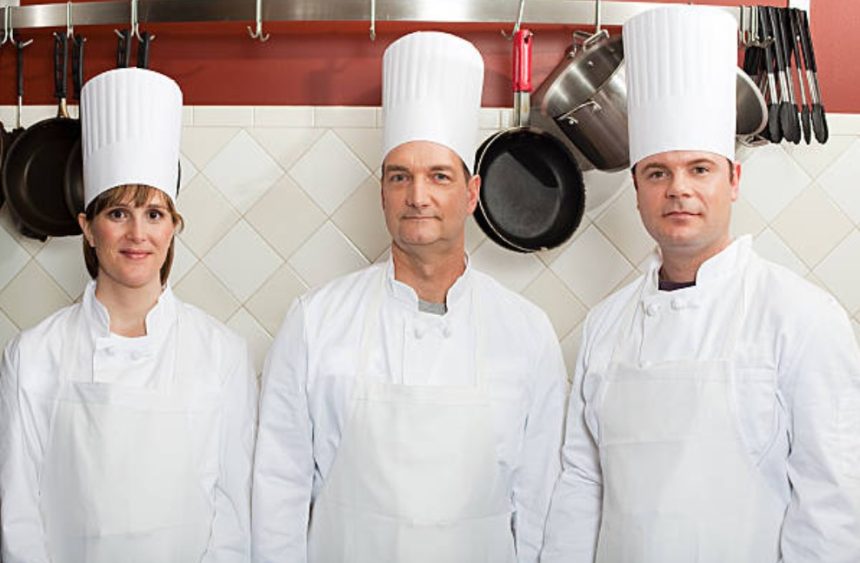Chefs are known for their signature white uniforms, but the tall hat, or toque blanche, is one of the most iconic parts of their attire. But why do chefs wear tall hats? Is it just for appearance, or does it hold deeper significance? This blog uncovers the history, purpose, and meaning behind the chef’s hat, explaining how this tradition evolved and why it still exists today.
The Origins of the Tall Chef’s Hat: Where Did It Begin?
A Hat with History
The origins of the chef’s hat date back centuries, with different cultures influencing its design. Some widely recognized theories include:
- Ancient Persia – It is believed that Persian rulers granted their royal chefs tall head coverings to indicate their rank in the kitchen.
- Greek and Byzantine Influence – Some sources claim chefs wore hats similar to monks’ head coverings in Byzantine monasteries to show their respected status.
- France in the 1800s – The modern tall chef’s hat is often credited to Marie-Antoine Carême, a legendary French chef, who introduced the tall white toque to differentiate kitchen hierarchy.
Why White? The Colour of Purity

White was chosen as the standard colour of chef hats in the 19th century because:
- It symbolizes cleanliness and discipline in the kitchen.
- It reflects heat, helping chefs stay cool while working near hot stoves.
- It allows for easy detection of dirt and stains, ensuring hygiene.
The Early Influences on Chef Attire
Historical records reveal that:
- Monastic Traditions influenced early headgear, marking humility and service.
- Royal Kitchens elevated the hat to a symbol of prestige.
- Skilled craftsmanship made these hats cherished heirlooms that have passed through generations.
Cultural Significance Across Regions
Different regions imbue the chef’s hat with unique cultural meanings:
- In France, the toque blanche became synonymous with culinary excellence.
- In Italy, regional adaptations reflected local culinary practices.
- Asia and the Middle East contributed distinct head-covering styles that emphasized both hygiene and symbolism.
What is the Purpose of the Tall Hat? Function Over Fashion
Hygiene: Keeping Hair Away from Food
One of the primary reasons for the chef’s tall hat is hygiene. It prevents stray hair from contaminating food, ensuring a clean and sanitary environment.
Status and Kitchen Hierarchy
Historically, the height of the chef’s hat signified rank and experience in the kitchen. The taller the hat, the higher the position. For example:
| Hat Height | Kitchen Role |
| 12-18 inches | Executive Chef (Head Chef) |
| 8-12 inches | Sous Chef (Second-in-Command) |
| 6-8 inches | Chef de Partie (Station Chef) |
| Shorter Hats or Skull Caps | Commis Chef (Junior Chef) |
Number of Pleats: A Sign of Skill
Traditionally, the pleats in a chef’s hat symbolized the number of ways a chef could cook an egg. Some hats even boasted 100 pleats, signifying mastery and versatility.
Ventilation and Comfort
The tall design isn’t just about tradition—it also aids in air circulation, keeping chefs cool in the heat of the kitchen.
Modern-Day Chefs: Do They Still Wear Tall Hats?
Changing Trends in Chef Attire

While the tall hat tradition is still respected, many modern chefs opt for alternatives such as:
- Skull caps – Offering a more compact and comfortable option.
- Bandanas or Headscarves – Popular in casual and open-kitchen settings.
- Shorter Hats Provide hygiene benefits while being less formal.
Why Some Chefs Still Prefer Tall Hats?
Despite contemporary trends, many chefs continue wearing tall hats because:
- They represent tradition and professionalism.
- They establish authority in the kitchen.
- They maintain kitchen discipline and hygiene standards.
A Glimpse into the Future of Chef Attire
Innovation in Materials is driving the introduction of new fabrics that enhance comfort while preserving tradition. Style Adaptations are also on the rise, with designers merging modern trends with classic design to suit today’s culinary aesthetics.
Embracing Tradition in a Modern World
Innovations in chef attire include the use of eco-friendly materials, as sustainable fabrics are now being incorporated into chef uniforms. Additionally, customization is becoming popular as personalized hats reflect individual culinary philosophies. Functional redesigns are also being implemented to ensure that the hat meets the modern demands of busy kitchens.
Contemporary Fashion Trends in the Kitchen
Modern chefs are blending traditional elements with current fashion sensibilities. Sleek and Minimalistic Designs are being embraced, keeping the classic shape of the chef’s hat while giving it a modern twist. Hybrid Styles are emerging as designers combine traditional features with modern functionality for enhanced versatility. Moreover, chef attire is increasingly being used as a component of a restaurant’s overall Brand Identity, contributing to a unique and cohesive image.
Why Do Chefs Wear Tall Hats? – The Breakdown
Historical Significance
The tradition dates back to ancient civilizations and royal kitchens, serving as a canvas for cultural evolution. The intricate design and pleats in the tall hat are a testament to skilled craftsmanship and symbolize a chef’s mastery.
Hygiene and Safety

The chef’s hat plays a vital role in preventing contamination by keeping hair away from food and supporting a sanitary working environment. Its design also aids in temperature control by promoting air circulation in busy, hot kitchens.
Professional Hierarchy and Recognition
The height of the chef’s hat historically indicated a chef’s rank, distinguishing senior staff in the kitchen. This visual cue not only streamlines communication but also serves as a proud symbol of a chef’s expertise and achievements.
Functional Advantages
Beyond its aesthetic appeal, the tall hat is engineered for practicality. Its design supports efficient air circulation and is easy to maintain, ensuring that chefs can uphold both style and functionality.
Cultural and Educational Impact
Culinary schools use the chef’s hat as a teaching tool to instill pride and a connection to the rich heritage of the culinary arts. The hat represents both tradition and the passing of invaluable skills from one generation to the next, serving as a global symbol of quality and excellence in the culinary world.
What do experts say about chef attire?
Insights from Culinary Professionals
Many top chefs appreciate the tall hat for its symbolic representation of their expertise and the culinary tradition. Their opinions highlight:
- It’s role in establishing authority in the kitchen.
- It’s contribution to maintaining cleanliness and presentation during service.
- The inspirational value it holds among culinary peers and enthusiasts.
Voices from the Kitchen
Renowned chefs often share that:
- Every chef should wear it with pride as a symbol of honour and discipline.
- The hat narrates a story of hard work, linking generations in the culinary world.
The Role of Tradition in Culinary Education
Teaching the Craft

Culinary schools emphasize the history of the chef’s attire as a way to instill responsibility and pride in aspiring chefs. This connection to the past:
- Curriculum Integration: Explains the evolution of professional identity in the culinary arts.
- Hands-On Learning: Students often recreate traditional uniforms in practical sessions.
- Mentorship Programs: Guest lectures by experienced chefs highlight the significance of tradition.
Education and Heritage in the Culinary Arts
- Historical Context: Understanding the origins of the chef’s hat enriches the learning experience.
- Cultural Transmission: Preserves culinary heritage and inspires future generations.
Final Thoughts: The Tradition Unveiled
So, why do chefs wear tall hats? The answer lies in history, hygiene, hierarchy, and functionality. While modern kitchens have evolved, the chef’s hat remains a symbol of respect, skill, and professionalism. Whether tall or short, the toque blanche continues to represent the discipline and dedication of a chef.
- Historical Legacy: The chef’s hat has deep roots that connect modern culinary professionals with their past.
- Functional Benefits: It plays a vital role in hygiene, organization, and temperature control.
- Cultural Impact: The hat is a symbol of professional pride and a key element in culinary education.
Would you wear a traditional chef’s hat, or do you prefer a modern alternative? Let us know in the comments!
FAQs: Your Questions Answered
Do all chefs have to wear tall hats?
No, it depends on the restaurant’s dress code. Some high-end kitchens still adhere to this tradition, while others allow modern alternatives like skull caps.
How tall can a chef’s hat be?
Historically, chef hats could be up to 18 inches tall, but most modern versions typically range from 6 to 12 inches.
Why do some chefs wear black hats?
Black hats are often chosen in modern kitchens where white uniforms show stains more easily. They provide a practical, stylish alternative.
Are tall hats just a formality, or do they have functional benefits?
Tall hats play a crucial role in maintaining hygiene, establishing hierarchy, and aiding in air circulation in busy kitchens.






